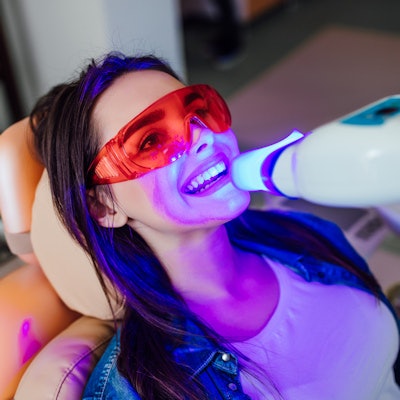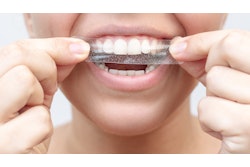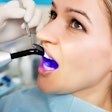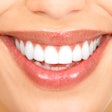
You may already know that the bleaching agent used and the exposure time affect the success of teeth whitening procedures, but these factors are the start of considerations dentists must take into account to achieve a pearly white finish.
Researchers analyzed available tooth whitening evidence and published their indications, limitations, and side effects in a June 9 article in Dentistry Review.
"With the increasing need for esthetic treatment among dental patients, it is important for dentists to have a good understanding of tooth whitening procedures, their specific indications, potential adverse effects, and limitations," wrote the study authors, led by Karina Irusa of Tufts University in Boston (Dent Rev, June 9, 2022, Vol.2:3, 100055).
Teeth whitening is a minimally invasive method to improve dental esthetics. As the general population becomes more interested in dental esthetics, the demand for esthetic procedures has increased, along with expectations for treatment outcomes.
Below are four surprising factors that affect the teeth whitening process, how long the procedure lasts, or the success of subsequent dental procedures.
Factors affecting teeth whitening success
1. Type of tooth stain
The darker the teeth are at baseline, the longer the whitening process will be. Severe tetracycline staining responds more slowly to chemical bleaching. Color also makes a difference, with gray or blue staining being less receptive to bleaching compared to yellow staining.
To increase the efficacy of tooth whitening, you will want to increase the concentration of hydrogen peroxide or carbamide peroxide or lengthen the exposure time.
2. Diet after bleaching
The term "white diet" has been used to describe the recommended diet following teeth whitening. Consumption of tea, coffee, and red wine can lead to tooth discoloration, and dentists commonly advise patients to abstain from smoking and drinking tea, coffee, and red wine while they are undergoing teeth whitening.
However, failing to adhere to this diet does not seem to alter the effectiveness of the bleaching. While adhering to a white diet is not mandatory during the whitening process, patients should use caution following treatment, as ingestion of certain substances may affect how long their teeth remain white.
3. New restorations
Bleaching has a damaging effect on the bond strength of resin materials. Reactive oxygen species are released by the bleaching agent, which then accumulates on the teeth's surface. Oxygen reacts with forming polymer chains in dental adhesives, terminating the elongation of the polymer chain and reducing the degree of conversion of the adhesive and resin composite. It is recommended that patients wait one to three weeks after bleaching before undergoing adhesive dental procedures.
4. Existing restorations
Diet can also stain restorative materials, but whitening doesn't work the same way on resin that it does on teeth. Composite resin discoloration can happen at three levels: the surface, subsurface, and intrinsic.
A solution of 15% carbamide peroxide bleach is effective in returning composite stained with both wine and coffee to its baseline color. But patients should be advised that there may be a mismatch between their resin composite restorations and their natural dentition following bleaching treatments.
Are whitening results sustainable?
Many patients ask about the longevity of their whitening results. The paper's authors urge dentists to use caution when answering this question. The rate of color relapse post-treatment is unpredictable and dependent on the patient's frequency of consuming dietary pigments, their smoking habits, and maintenance of oral hygiene.
Whitening can also have side effects, and the severity depends on the technique used, the concentration of the whitening agent, and the duration of treatment. Tooth sensitivity is common and often lasts two to three days following treatment. It is believed to be a result of byproducts of bleaching agents diffusing through the dentinal tubules and inducing a transient pulpal reaction.
Gingival irritation may also occur with teeth whitening. Failed gingival barrier protection in in-office bleaching is the leading cause of gingival irritation, though it can also occur when patients use excessive amounts of bleaching material that overflow out of the whitening tray. The irritation is often tolerable, self-limiting, and not a barrier to treatment completion.



















